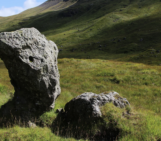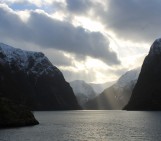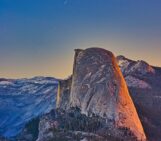
Glacial erratic rocks . Credit: Yuval Sadeh (distributed via imaggeo.egu.eu)
Yosemite National Park, in California, is renowned for its beautiful and striking landscapes. So much so, this is the second time it has feature on the blog this summer. While our last post on the park focused on the ancient volcanic history of its landscape, in this post we fast forward to the Plesitocene (some 110,000 to 12,000 years ago) to discover more about how glaciers shaped Yosemite’s landscape. Indeed, it is the glacier carved landscape which has made the park so famous!
During the last ice age, the high peaks and valleys of the Sierra Nevada (of which Yosemite belongs to) were covered by ice. A vast continental ice sheet spread across much of the United States and Canada. Local climate variations as well as the geographical position of Yosemite meant that the accumulation of ice in the region was particularly unique, and didn’t belong to the vast continental ice sheet. Nevertheless, glaciers dominated the landscape during this time and the scars left behind by their presence resulted in a range of landforms observable today: including chatter marks (gouges left in granite by moving glaciers), glacier polish (shiny patches of granite), exfoliation (layered cracking of rocks which resembles onions peeling), and many others.
As glaciers move, they accumulate debris underneath their surface. As the vast frozen rivers advance, they carry the debris, which can range from pebble-sized rocks through to house-sized boulders, along with it. As the climate in the Yosemite region began to warm as the ice age came to an end, the glaciers slowly melted. Once all the ice was gone, the rocks and boulders, known as glacial erratics, were left behind.
One of the best examples of glacial erratics can be seen at Olmstead Point, near Mt. Hoffmann, in Yosemite National Park, as photographed by Yuval Sadeh. Yuval reminisces about the moment he reached the spot where the boulders are strewn across the landscape:
“I remember walking on this extremely smooth scraped surface, watching the glacial erratics rocks which looks like a giant artist placed them gently on the bedrock. Although the glacier melted many years ago, out there on the glacier carved surface it seems that time is standing still ever since.”




Pingback: GeoLog | The best of Imaggeo in 2016: in pictures